Related Research Articles
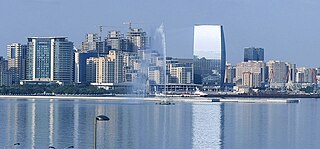
The economy of Azerbaijan is highly dependent on oil and gas exports, in particular since the completion of the Baku-Tbilisi-Ceyhan Pipeline. The transition to oil production in the late 1990s led to rapid economic growth over the period 1995–2014. Since 2014, GDP growth has slowed down substantially.

A joint-stock company is a business entity in which shares of the company's stock can be bought and sold by shareholders. Each shareholder owns company stock in proportion, evidenced by their shares. Shareholders are able to transfer their shares to others without any effects to the continued existence of the company.
A transition economy or transitional economy is an economy which is changing from a centrally planned economy to a market economy. Transition economies undergo a set of structural transformations intended to develop market-based institutions. These include economic liberalization, where prices are set by market forces rather than by a central planning organization. In addition to this trade barriers are removed, there is a push to privatize state-owned enterprises and resources, state and collectively run enterprises are restructured as businesses, and a financial sector is created to facilitate macroeconomic stabilization and the movement of private capital. The process has been applied in China, the former Soviet Union and Eastern bloc countries of Europe and some Third world countries, and detailed work has been undertaken on its economic and social effects.
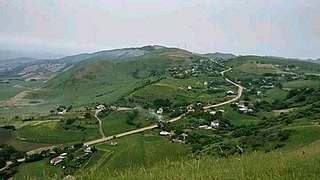
Jalilabad District is one of the 66 districts of Azerbaijan. It is located in the south-east of the country and belongs to the Lankaran-Astara Economic Region. The district borders the districts of Masally, Yardimli, Bilasuvar, and Neftchala. Its capital and largest city is Jalilabad. As of 2020, the district had a population of 225,300.

Masally District is one of the 66 districts of Azerbaijan. It is located in the south-east of the country and belongs to the Lankaran-Astara Economic Region. The district borders the districts of Lankaran, Lerik, Yardimli, Jalilabad, and Neftchala. Its capital and largest city is Masally. As of 2020, the district had a population of 227,700.
The economy of the Socialist Federal Republic of Yugoslavia (SFRY) was a unique system of socialist self-management that operated from the end of World War II until the country's dissolution in the 1990s. The Yugoslav economy was characterized by a combination of market mechanisms and state planning, with a focus on worker self-management and a decentralized approach to decision-making. Despite facing numerous challenges, including political instability and external pressures, the Yugoslav economy achieved significant growth and modernization during its existence, with a particularly strong emphasis on education, health care, and social welfare. However, the system ultimately proved unsustainable in the face of the global economic changes of the 1980s and the political tensions that led to the breakup of Yugoslavia in the 1990s. Despite common origins, the Yugoslav economy was significantly different from the economies of the Soviet Union and other Eastern European socialist states, especially after the Yugoslav-Soviet break-up in 1948. The occupation and liberation struggle in World War II left Yugoslavia's infrastructure devastated. Even the most developed parts of the country were largely rural, and the little industry of the country was largely damaged or destroyed.
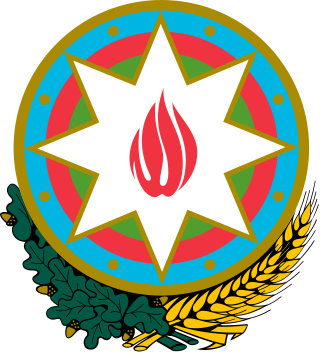
The Central Bank of Azerbaijan is the central bank of Azerbaijan Republic. The headquarters of the bank is located in the capital city Baku.
The economic history of the Republic of Turkey had four eras or periods. The first era had the development policy emphasizing private accumulation between 1923 and 1929. The second era had the development policy emphasized state accumulation in a period of global crises between 1929 and 1945. The third era was state-guided industrialization based on import-substituting protectionism between 1950 and 1980. The final, era was the opening of the economy to liberal trade in goods, services and financial market transactions since 1981.
Privatization in Croatia refers to political and economic reforms which include the privatization of state-owned assets in Croatia. Privatization started in the late 1980s under Yugoslav Prime Minister Ante Marković and mostly took place in the 1990s after the breakup of Yugoslavia, during the presidency of Franjo Tuđman and the rule of his party Croatian Democratic Union (HDZ), and continued in the 2000s with the privatization of large state enterprises. Many aspects of the privatization process are still seen as controversial as the political and economic turmoil, coupled with the events of the simultaneous 1991–95 independence war, are thought to have led to a degree of criminal activity.

The Mongolian Stock Exchange is Mongolia's sole stock exchange. It is based in Ulaanbaatar and was established in January 1991 by the decree of the Mongolian Government to privatize state-owned assets.
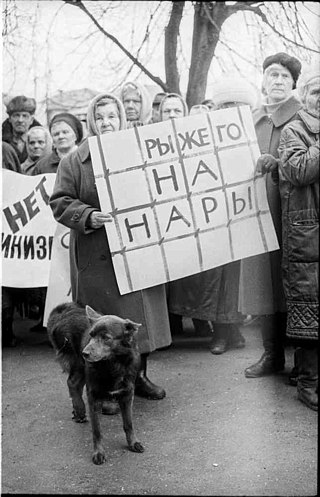
Privatization in Russia describes the series of post-Soviet reforms that resulted in large-scale privatization of Russia's state-owned assets, particularly in the industrial, energy, and financial sectors. Most privatization took place in the early and mid-1990s under Boris Yeltsin, who assumed the presidency following the dissolution of the Soviet Union.

ABB, the largest bank in Azerbaijan, is an open joint-stock company whose shares are owned by the Azerbaijan state. Its head office is located in Azerbaijan.
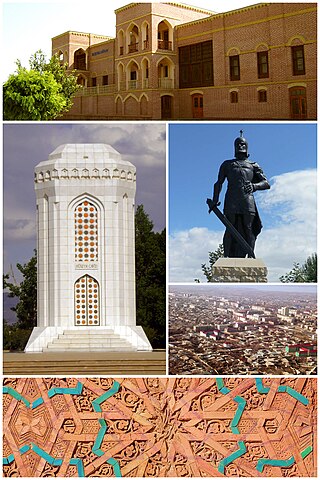
Economy of Nakhchivan covers the issues related to the economy of the city of Nakhchivan, is the most important center of economic activity in Azerbaijan.

The primary crops produced in Azerbaijan are agricultural cash crops, grapes, cotton, tobacco, citrus fruits, and vegetables. The first three crops account for over half of all production, and the last two together account for an additional 30 percent. Livestock, dairy products, and wine and liquors are also important farm products.
Farhad Aliyev is an Azerbaijani politician. He was born in 1963 in Azerbaijan.
Banking in Azerbaijan in its present form dates back to 1992, but it originates in the second half of the 19th century and continued through the Soviet period. It consists of the country's central bank, the Central Bank of Azerbaijan, founded on 11 February 1992, and other commercial banks. The commercial banks in the country are joint–stock.

Mikayil Chingiz oghlu Jabbarov is an Azerbaijani politician who is the current Minister of Economу of Azerbaijan
The overall investment climate in Azerbaijan continues to grow despite of significant challenges remain. Over the recent years, the country has made efforts to integrate more fully into the global marketplace and attract foreign investment.
The economy of Azerbaijan has gone through different stages of rapid growth, stability, and crisis. In general, economy of Azerbaijan, besides field-wise classification, can be divided into three categories: 1. recession period, covering 1992–1995, right after Azerbaijan restored its independence after the USSR collapsed, 2. recovery, from 1996 to 1997, mainly because of increased oil sales, potential oil contracts, partners, and pipelines, 3. boom, from 1998 till 2008, and finally, an economic fall, starting from 2009.
Tax Code of Azerbaijan is the primary tax law in Azerbaijan. The Code establishes general principles of taxation In Azerbaijan, sets the rules for determining, payment and collection of taxes, identifies the rights and responsibilities of taxpayers and tax authorities, as well as the liabilities for violation of tax legislation.
References
- 1 2 3 4 "The Incredible Half-Billion-Dollar Azerbaijani Oil Swindle Wherein we learn why smart players like Leon Cooperman, George Mitchell, and AIG would entrust buckets of their money to Victor Kozeny, a.k.a. the Pirate of Prague. (Hint: Can you say 'greed'?) - March 6, 2000". money.cnn.com. Retrieved 2023-12-31.
- ↑ gress, amy (2008-08-18). "Privatization & Corruption: The World Bank and Azerbaijan". Government Accountability Project. Retrieved 2023-12-31.
- 1 2 Flegel, Tina (2016). "Foreign Actors' Influence on Azerbaijan's Energy Policy". Springer: 321–323. doi:10.1007/978-3-658-11404-6.
- 1 2 3 "Offshores Close to President Paid Nothing for State Share of Telecom - Corruptistan". OCCRP. 2015.
- ↑ Asadzade, Ulviyye; Ismayilova, Khadija (2010-08-13). "Aliyev's Azerbaijani Empire Grows, As Daughter Joins The Game". Radio Free Europe/Radio Liberty.
- ↑ "People of Azerbaijan Bail out Failed Aliyev Mining Empire - The Panama Papers". OCCRP.
- ↑ Nicat. "Privatization experience". www.privatization.az. Archived from the original on 2018-10-22. Retrieved 2018-03-19.
- ↑ "Law of the Azerbaijan Republic "About privatization of housing stock in the Azerbaijan Republic"". cis-legislation.com. Retrieved 2018-03-19.
- 1 2 3 4 5 G.Bayramov. "Privatization in Azerbaijan: analysis in comparison with the experience of foreign countries" (PDF).
- ↑ "About the statement of the Second State Program of privatization of the state property in the Azerbaijan Republic". www.emdk.gov.az. Retrieved 2018-03-19.
